Mint as a garden plant is the perfect herb to grow for newbie gardeners. This plant is the easiest to grow out of all the herb plants in the world.
The mint plant is a perennial and is hardy in Zones 4-9.
It is also used in flavoring food and drinks and is also used as a natural pest control plant in vegetable, flower, and herb gardens.
The Mint plant is extremely easy to grow from its seedlings, but a little extra care can help speed up the sprouting process.
How Long Does It Take for Mint Sprouts to Grow True Leaves?
A mint plant will usually sprout true leaves within two to three weeks. You can help your plant sprout its true leaves within two to three weeks by keeping them under direct sunlight until the afternoon. Once its evening, you can place your plant under partial Shade. Overall, Mint is a very hardy plant and can thrive under a variety of conditions. Many gardeners often find it hard to keep their mint plants under control, and they grow extremely fast.
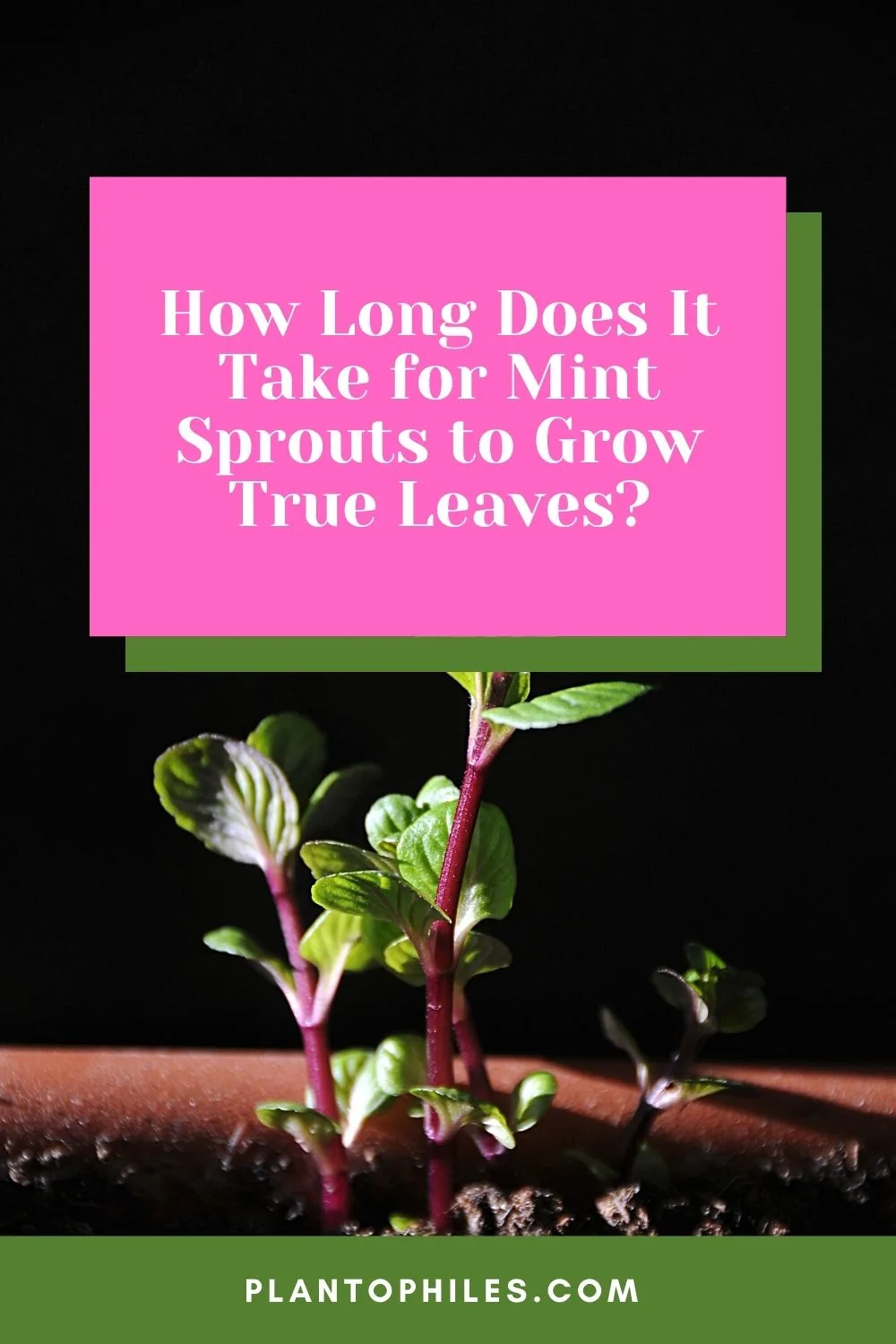
How Long Does It Take for Mint Sprouts to Grow True Leaves?
Table of Contents
10 Ways to Make You Mint Plant Sprout Faster
1. Sow Seeds Indoors
If you are growing your mint plant indoors within a biodome, then place your seed flat on the bio sponge.
You should not cover the seeds and let them germinate under sunlight.
Your seedlings should sprout in 10 to 15 days at normal room temperature or even slightly warmer conditions.
Place your seedlings into a container once you at least 2 sets of leaves sprout from them.
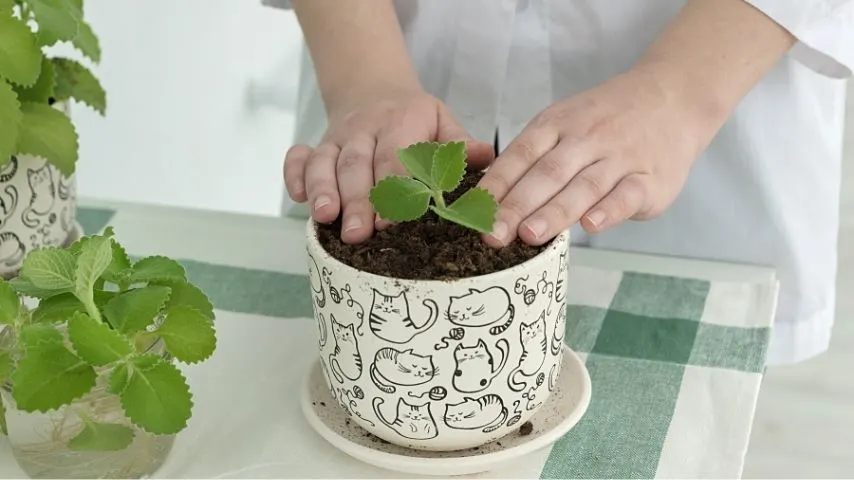
Place your Mint seedlings in a container once it grows at least 2 sets of leaves
2. Sow Seeds Outdoors
Sowing the seeds indoors means you need to place your Mint sprouts at the top of a well-worked soil. Then you can continue to sprinkle a layer of vermiculite on top of it.
You should place a row cover over the seed if you’re sowing your Mint sprout directly into garden soil.
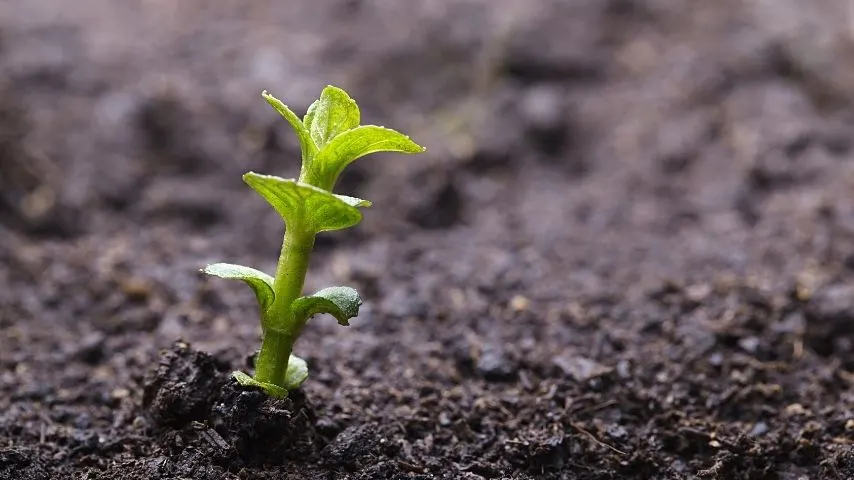
If you’re planting Mint sprouts to garden soil, place a row cover over it
This cover should remain on your Mint seedlings until you finally see some sprouts coming out from the seeds.
3. Shade
Mint is a low-maintenance plant and does not have demands for the amount of Shade you provide them.
However, for the best mint plant, you should keep it under partial Shade.
4. Soil
With very little demand, Mint plants only need rich and moist soil. Just make sure that the soil is never completely dry, as the plant will start to wither away.
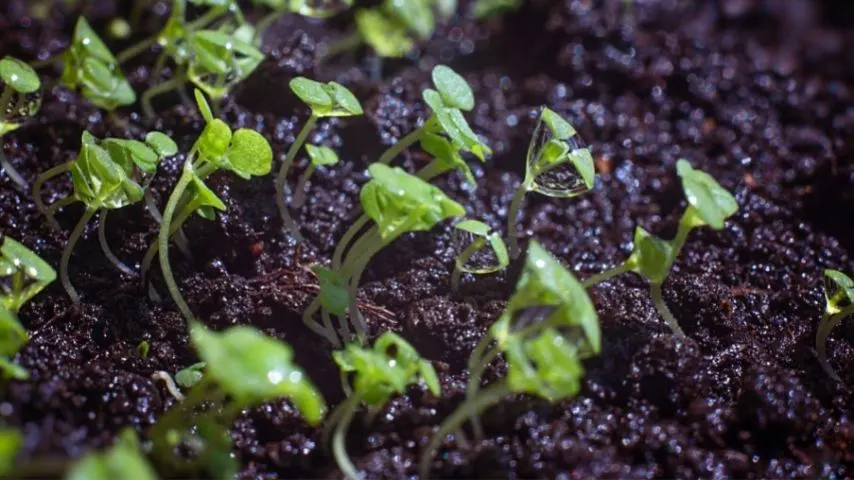
For Mint sprouts to grow, they need soil that is both rich in nutrients and moist
Some gardeners even try to plant their mint plants in less favorable conditions since it tends to grow fast.
5. Space
To get the best quality mint plants, keep each Mint sprout at least 12 to 18 inches (30-to-46 cm) away from each other.
This much distance between each plant allows all your Mint to get an equal amount of nutrients hence providing you with more Mint.
6. Temperature
You should place your Mint plant under normal room temperature or slightly higher temperature.
Ideally, the temperature surrounding your mint sprouts should range from 68°F to 75°F (20°C to 24°C).
7. Pinch the Tips
Throughout the growing season, you should try to pinch the tips of your Mint plant’s stem.
This will help your plant remain less leggy and become bushier.
8. Fertilizer
You should avoid using fertilizer on your mint plant. Too much fertilizer prevents your Mint plant from producing the oils that make the herb tasty.
You should only use fertilizer once a year, and this should be done once when you have planted your seedlings.
The fertilizer should be reapplied each spring, and this will provide the plant with more than enough nutrients to grow.
9. Watering
Mint plants need water in their soil only once the soil around the plant is primarily dry.
Usually, once the first half an inch of the soil is dry, your Mint plant should be watered again, or it will start to wilt.
10. Soaking
If you need your mint plant to grow faster, then you can even soak the seedlings one day before planting them into the soil. You should only soak your Mint sprout for a few hours, anywhere between 2 to 3 hours.
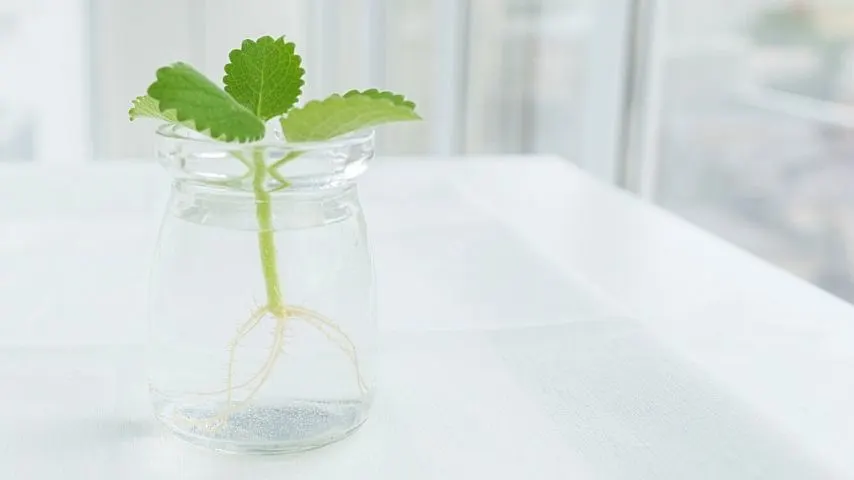
Soak your mint sprouts in water 1 day before planting them in soil
This will help with the speeding up of the germination process. Just make sure the seeds are placed in warm waters.
It should not be hot water or cold water as it can harm the seeds.
4 Reasons Why Your Mint Won’t Sprout
1. Underwatering
While Mint plants are very hardy, they do require some amount of watering to thrive. The soil should never become completely dry around your mint plant as it flourishes in moist soil.
If your Mint plant is being underwatered, you will notice that its stems and leaves are wilting.
Your Mint Sprout leaves may even start to turn brown.
To avoid underwatering your Mint plant, try to keep a fixed schedule that allows you to keep track of when you water your plant.
You should also look at the weather conditions, as hotter temperatures will require you to water your plant frequently.
2. Root Rot
Boggy soil or planting your Mint seeds in a pot that does not have drainage holes can cause the Mint to turn yellow and droop.
To save your Mint plant from root rot, reduce how often you water your mint plant.
If your mint plant is suffering from root rot, then you will notice that the leaves have started to become yellow or brown. The plant may even look like it’s starting to wilt.
You can also stop root rot in mint plants by placing them in a well-draining pot or garden soil that does not retain excess moisture.
3. Dying in Pots
Your mint plant may start to die in its pot because the pot has become too small for your large plant.
Not having enough or proper drainage holes can also be an issue.
The solution for this is simple as you only need to buy a larger pot so that your plants have enough nutrients. It would also help if you bought a pot with enough drainage holes.
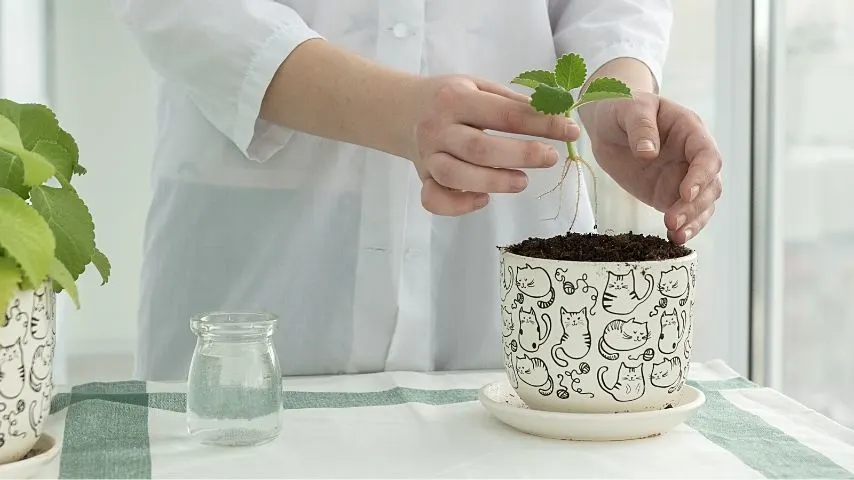
To ensure your mint sprout grows healthy, place it in larger pots with drainage holes
4. Leggy Growth
Your Mint plant may have leggy growth due to a lack of sunlight or because you have provided it with too much fertilizer.
To save your plant front leggy growth, you just need to relocate it to a sunnier spot.
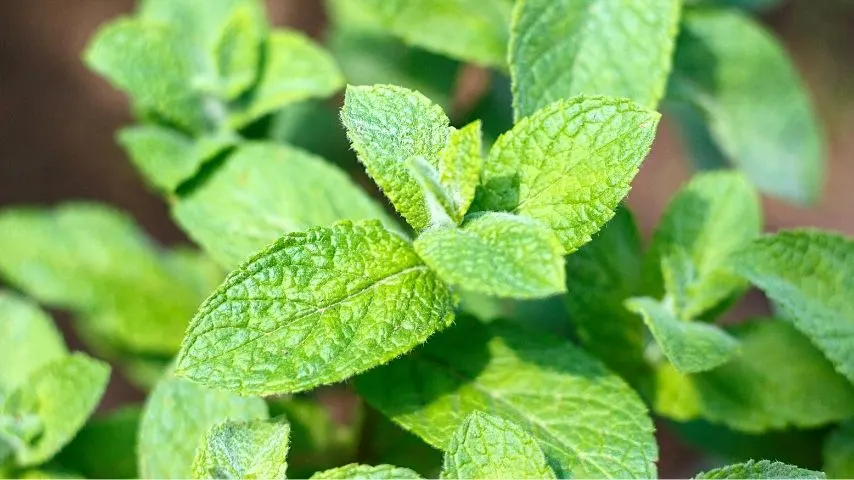
To avoid leggy growth in your Mint plant, relocate it to a sunnier area
You should also avoid the use of excess fertilizer as it can have serious side effects for your Mint plant. Often times mint plants do not require extra fertilizer if it has been planted in nutrient-rich soil.
But if you notice that your Mint plant is starting to show slow growth, then you should fertilize it once during the growing season.
If your mint plant is drooping too much due to lack of sunlight or excess fertilizer, then prune those parts of your plant.
Read about the great companion plants for mint next.
Frequently Asked Questions about How Long Mint Sprouts Grow True Leaves
Are Mint plants easy to grow from seeds?
Mint plant is extremely easy to grow just from the seedlings as well. They sprout quite often and can get bushy really fast.
How many should Mint seeds be planted?
You should sow three seeds in each of your plant pots in order to ensure they germinate. Then you can thin out the excess plant once it starts to grow.
Does Mint sprout in pots?
Mint plants will sprout both outdoors and indoors. You simply need to provide it with proper conditions for growth, and it should sprout within its normal timeframe.

Daniel has been a plant enthusiast for over 20 years. He owns hundreds of houseplants and prepares for the chili growing seasons yearly with great anticipation. His favorite plants are plant species in the Araceae family, such as Monstera, Philodendron, and Anthurium. He also loves gardening and is growing hot peppers, tomatoes, and many more vegetables.


